As we approach our fifth week of Shelter-In-Place orders here in the Bay Area, I think many of us are going a bit stir crazy. It has forced us all to pause in our adventures and has given me the chance to go through some photos from the last year or so.
Last winter, in January 2019, I stopped by Las Vegas for my friend’s birthday celebration and Celine Dion’s concert (yes, she was amazing and it was her last year of residency in Vegas!), then headed over to Arizona to meet my friend/colleague in his home state. I had debated about whether I should cancel the trip, as my brother was having some health problems and had a surgery booked during the trip. But he didn’t want me to cancel and encouraged me to travel, so I forged ahead with discovering as much as possible.
We stayed in the Phoenix area but took day trips all over the place. We must have clocked in like 1,000 miles over the period of a four-day weekend. My friend had grown up in Arizona, but he hadn’t really explored a lot of the outdoor areas for very long. So we seized each day, and cruised around looking for some photo opportunities.

We visited a couple of National Parks during my stay, and they were a complete contrast with one another. The major conundrum was the Government Shutdown that had been happening for nearly a month at the time. The Grand Canyon State’s governor declared that they would keep their namesake park open, and were collecting fees at their entrances. They also were commemorating the Grand Canyon’s 100th birthday as a National Park, and their visitor center was open to sell t-shirts and other merchandise as celebration. Saguaro National Park, on the other hand, seemed to be working with a skeleton crew of park rangers and the visitor centers were all closed. We saw maybe two park ranger trucks while we were there for half the day, and honestly it might have been the same one making its rounds. Despite the park’s closure during the government shutdown, many trails and the Scenic Bajada Loop Drive/Hohokam Road were open. There are some parallels to the current park status from COVID-19, however they have closed all visitor centers and restrooms following guidance from the Centers for Disease Control (CDC). Per usual, be sure to check the park’s website prior to planning your trip just in case there are any closures or park alerts to take into consideration.



We went around the western end of the park, the Tucson Mountain side. On the way to the visitor’s center we made a quick stop to check out the paved Desert Discovery Trail.
Desert Discovery Trail
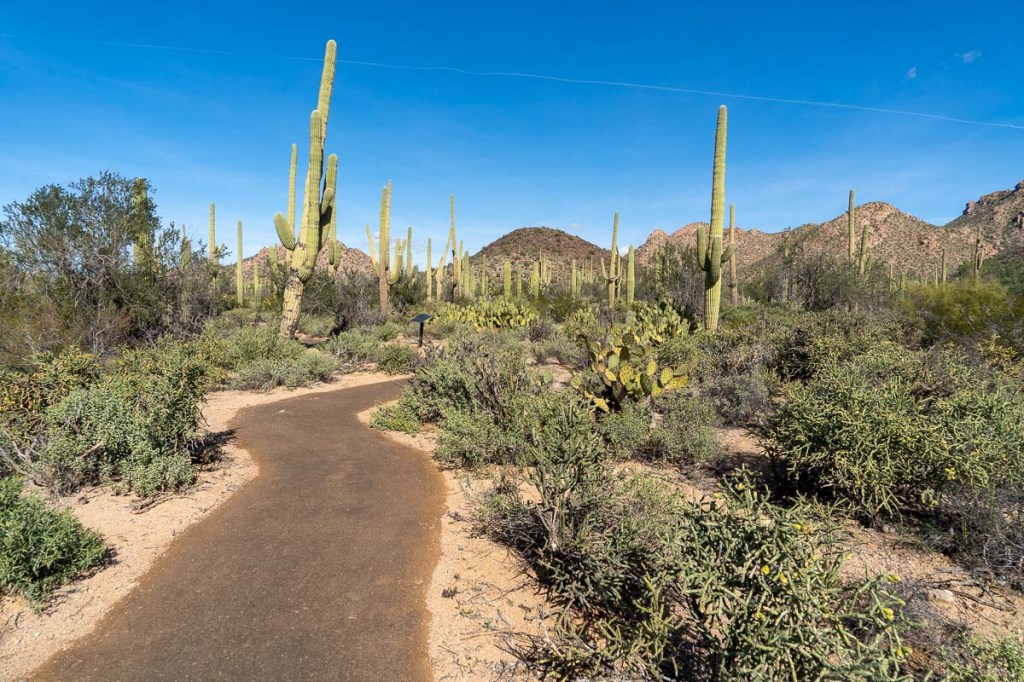
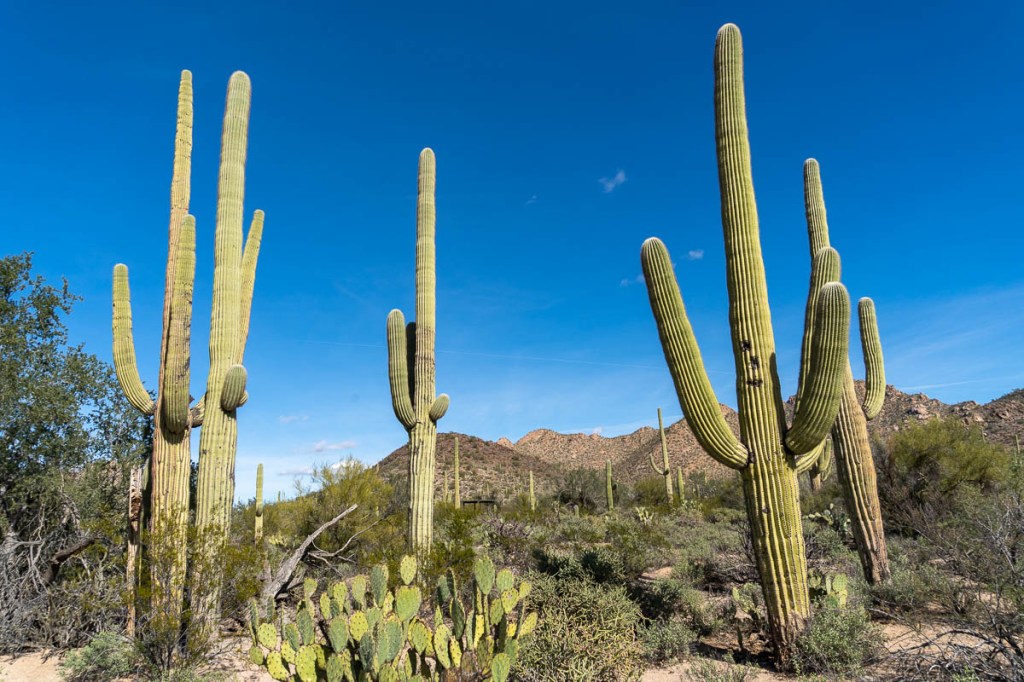
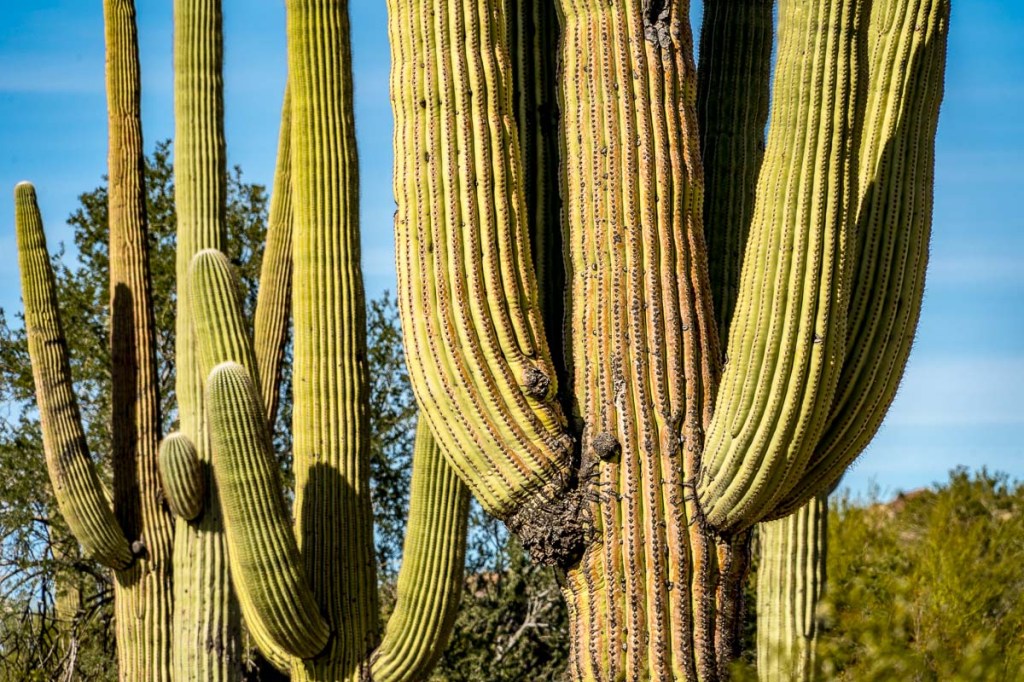
The Desert Discovery Trail is a flat 0.4 mile loop trail that is handicap accessible. It has all sorts of cacti ranging from the saguaros to barrel to prickly pear. There are a couple of sheltered benches to provide shade from the incessant sunshine. Even though it was the middle of winter in January, temperatures still got to the low 80’s. I can see why most people who live in Arizona hike in the wintertime, and why it’s a great time to visit if you’re not a fan of the heat. On rare occasion it’ll snow (I have seen photos and videos of it), which is amazing to see as the white powder juxtaposes against the tall giants that are more attuned to cartoon images of deserts. Although most people think of deserts as arid, dry and desolate environments, the Sonoran desert experiences two seasons of rain that support a range of ecosystems. From December to March the Pacific Ocean will bring gentle rain to the northwestern areas of the Sonoran Desert whereas from July to September the area experiences summer monsoons with localized thunderstorms and humid tropical air [1].
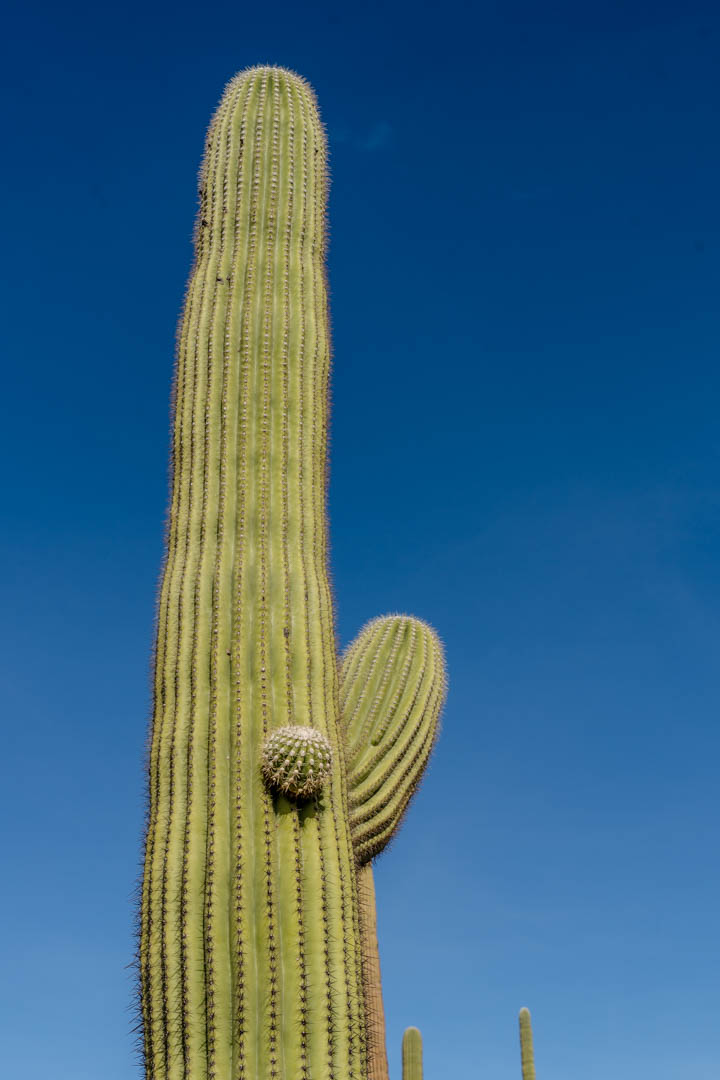

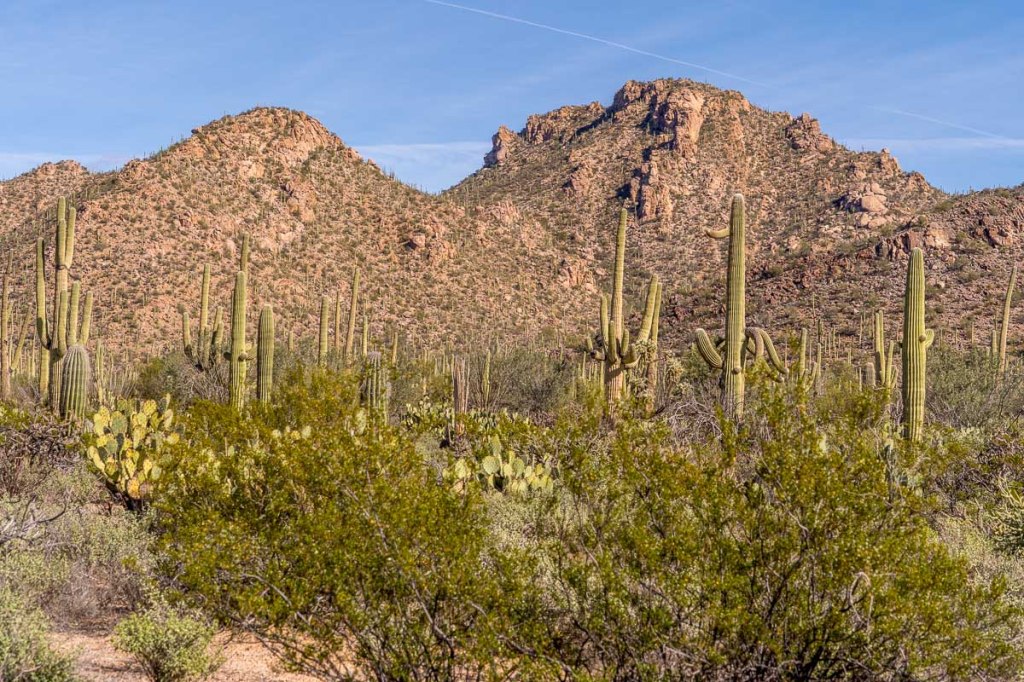

Saguaros (pronounced suh-waa-row) are one of the defining plants of the Sonoran Desert, which spans approximately 100,000 square miles [2]. Unlike the cholla cactus and ocotillo that I discuss in my Joshua Tree National Park post which are common in the Sonoran Desert, saguaros only grow in southern Arizona and western Sonora, Mexico. Saguaros are limited to grow in elevations from sea level to about 4,000 feet [3]. Saguaros will limit their growth to the warmer south-facing slopes where freezing temperatures are less likely to occur or are shorter in duration the farther north and higher in elevation you go [4].

It’s estimated that they can live for 150-200 years with the right growing conditions. They are extremely slow growing plants; a 10 year old saguaro may only be 1.5 inches tall. By 70 years old, a saguaro can reach 6.5 feet tall and will start to produce their first flowers. By 95-100 years old, it can reach a height of 15-16 feet and could start to produce its first arm. By 200 years old, the cactus has reached it maximum height, usually reaching upwards of 45 feet tall. The tallest ever recorded measured a whopping 78 feet tall [5]! Some saguaros are seen with dozens of arms, while other cactus never produce a single one, which is a mystery. It’s extremely hard to tell how tall these cacti are unless someone stands next to it for scale (such as myself). Even with my arms raised, I look so short by comparison to these giant and presumably elderly saguaro.
The saguaro cactus gets water through its shallow root system or its single taproot that extends straight down into the soil to a depth of approximately 5 feet. The shallow maze-like root system extends about 3 inches deep and allows the cactus to easily collect any rain water. The cactus stores the water with its sponge-like tissue to prepare for periods of drought. The skin of the cactus expands as it collects more and more water. The cactus gets heavier and at full capacity, a foot of the saguaro can weigh 90 pounds [6]! If it’s a good year for rain and a saguaro is fully hydrated, they’re estimated to weigh between 3200 and 4800 pounds [7].


Red Hills Visitor Center (Closed)
After stretching our legs on the paved pathway of the Desert Discovery Trail, we headed toward the visitor center that we assumed was closed. There was no one else in the parking lot, and the park felt so deserted. Signs were posted on the doors that the area was closed due to “lapse in federal appropriations” and attempted delivery notices for packages were attached to the door. Other notes of encouragement from park visitors that had messages like “We still love you, Thanks!” were a joy to see.


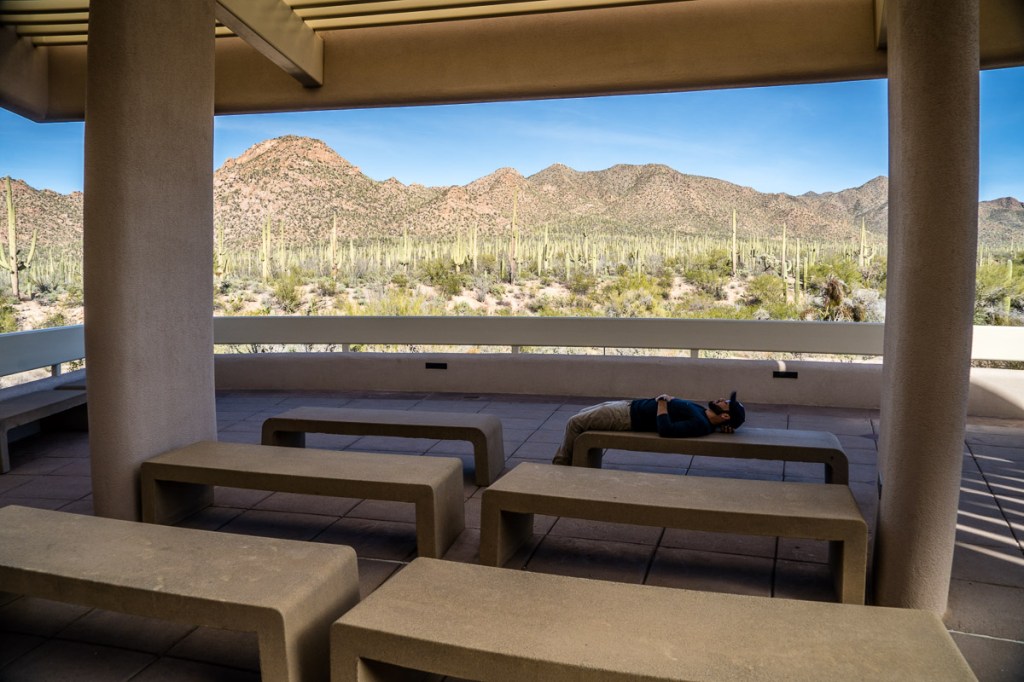
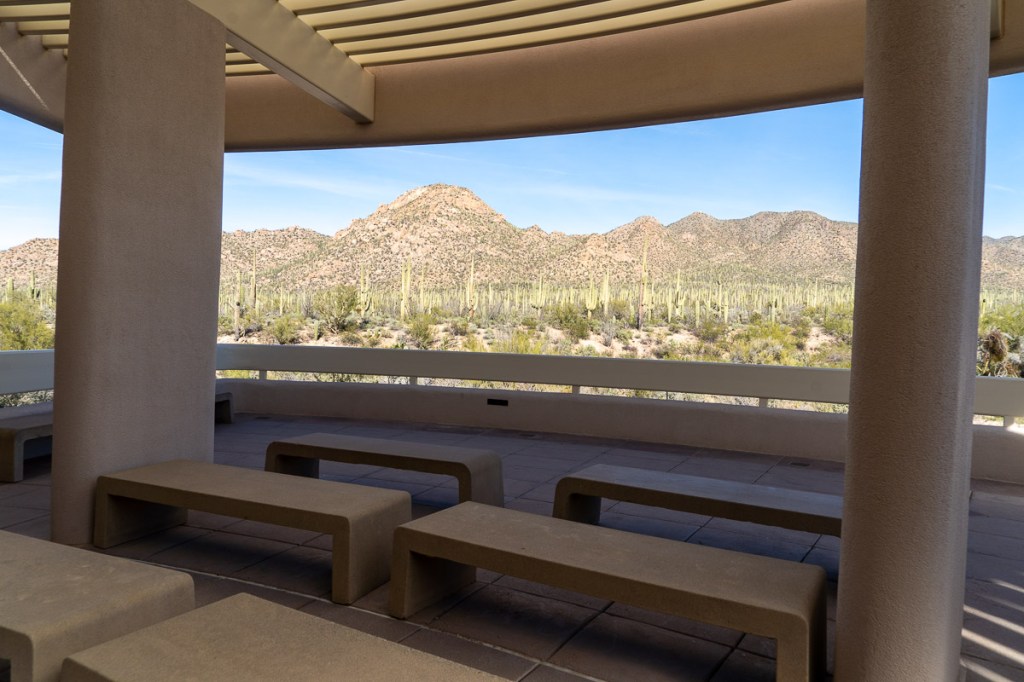
Normally they would have ranger talks share how fascinating the saguaros are, and how their environment is endangered like most seem to be nowadays, but instead the park benches remained empty. There was a slight breeze in the shade and if the park benches weren’t concrete, it would have made an epic nap-spot.
Sus Picnic Area
We had to search around to find an open bathroom, and found a pit toilet in the Sus Picnic Area that saved the day. The bathroom also had a lovely reminder to hydrate with a urine color chart. I don’t think I’ve ever seen anything like this posted before, and it was laminated so you know they meant business. In addition to being a saving grace, the picnic area was actually quite nice. It had some covered picnic benches. And it had great views of beautiful hills laden with saguaros.
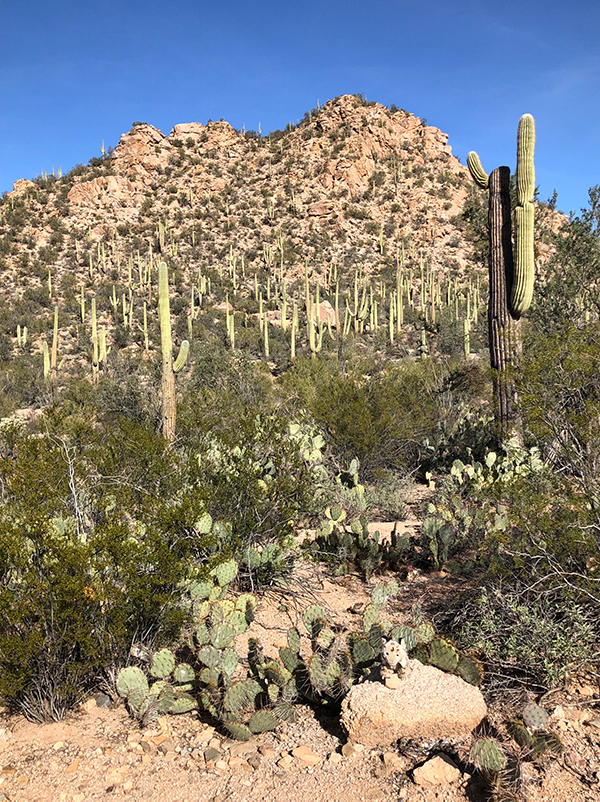
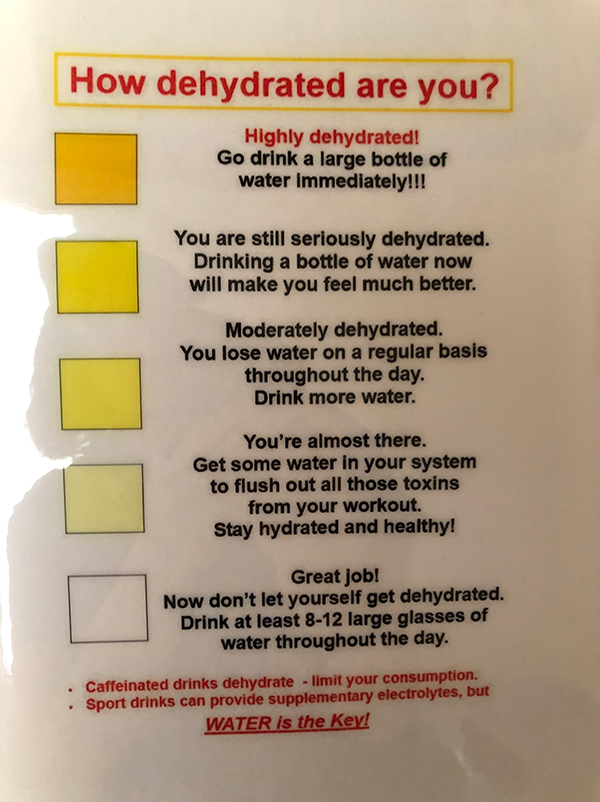

Valley View Trail
We parked in what appeared to be the most popular place in the park thus far, the Valley View Trailhead. They had nice little interpretive signs to accompany you for the short stroll that was less than a mile round-trip. Suddenly you get to the bench with a grand view of the saguaro forest beneath you. There were countless saguaros in all directions, which was truly spectacular.

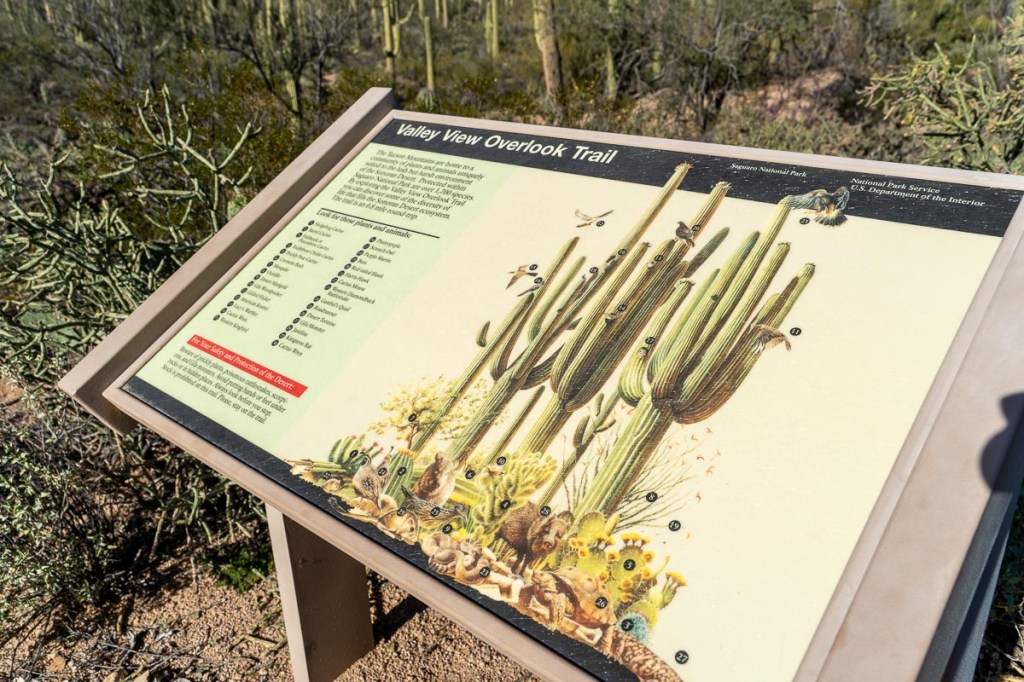
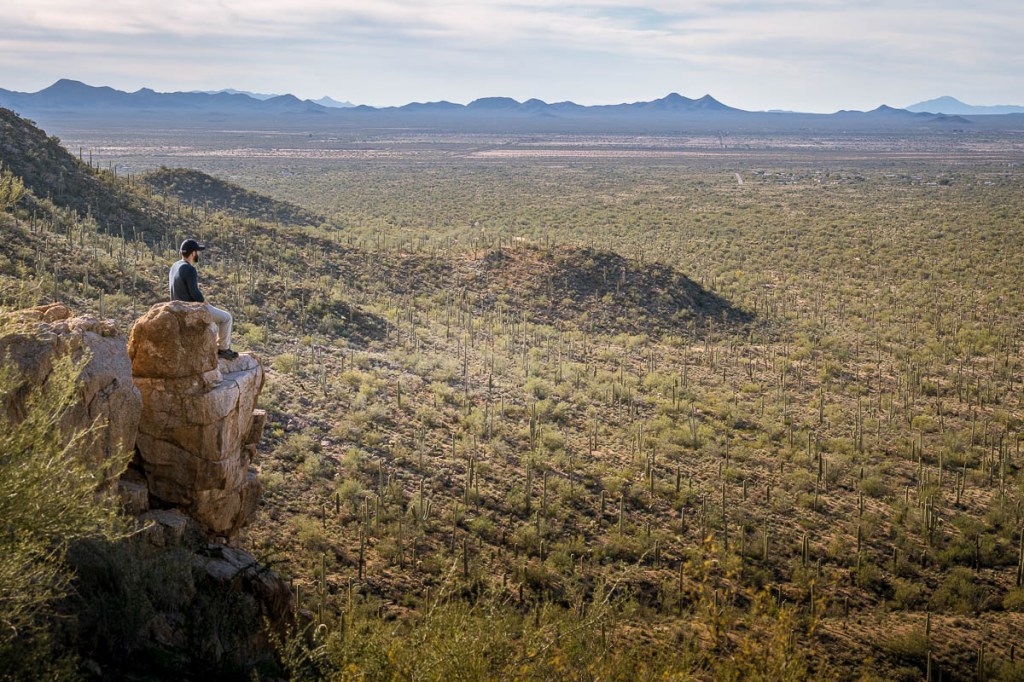


Despite the trailhead parking area being pretty full, we only saw a few people on the trail. Then we headed back and drove along the scenic road loop, then made our way to Signal Hill.
Signal Hill
Did you know that you can view dozens of 800-year old petroglyphs right in the park? Most of the rock art in the region were created by the prehistoric Hohokam who created the petroglyphs were by etching, pecking or scraping designs into the dark patina on the surface of the native sandstone and other rocks [8].
The trail is relatively flat until it zig-zags up a small hill just north of the Signal Hill Picnic Area. It is rough and uneven in some places and contains rock steps. It’s nice to be able to walk among the giants.
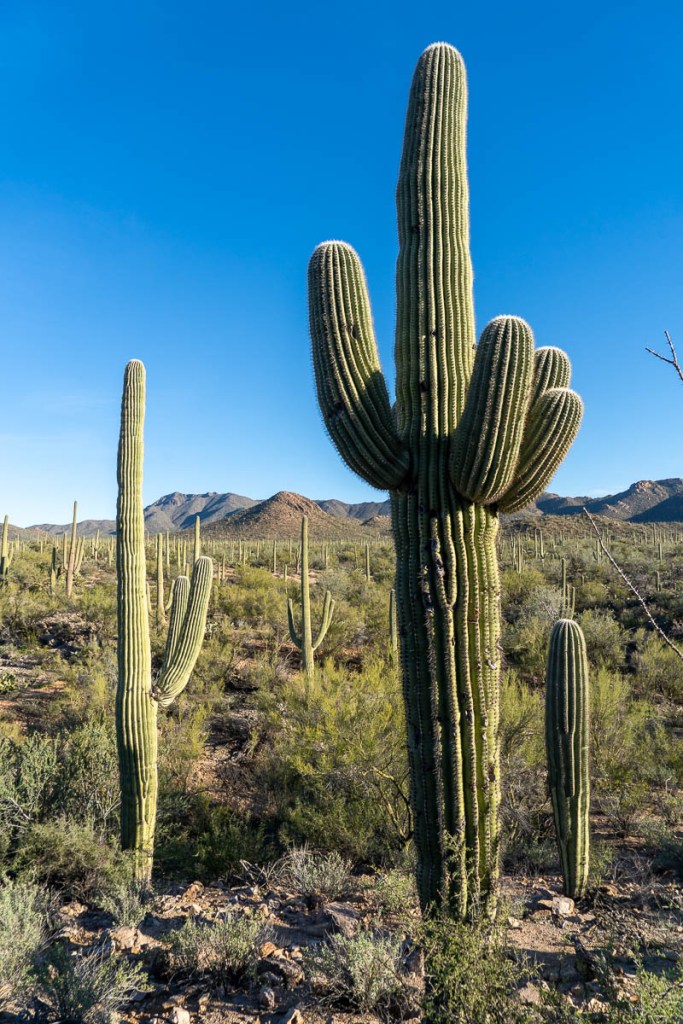

As you continue on the trail, you come across a giant pile of rocks. If you look closely you’ll see all of these petroglyphs.
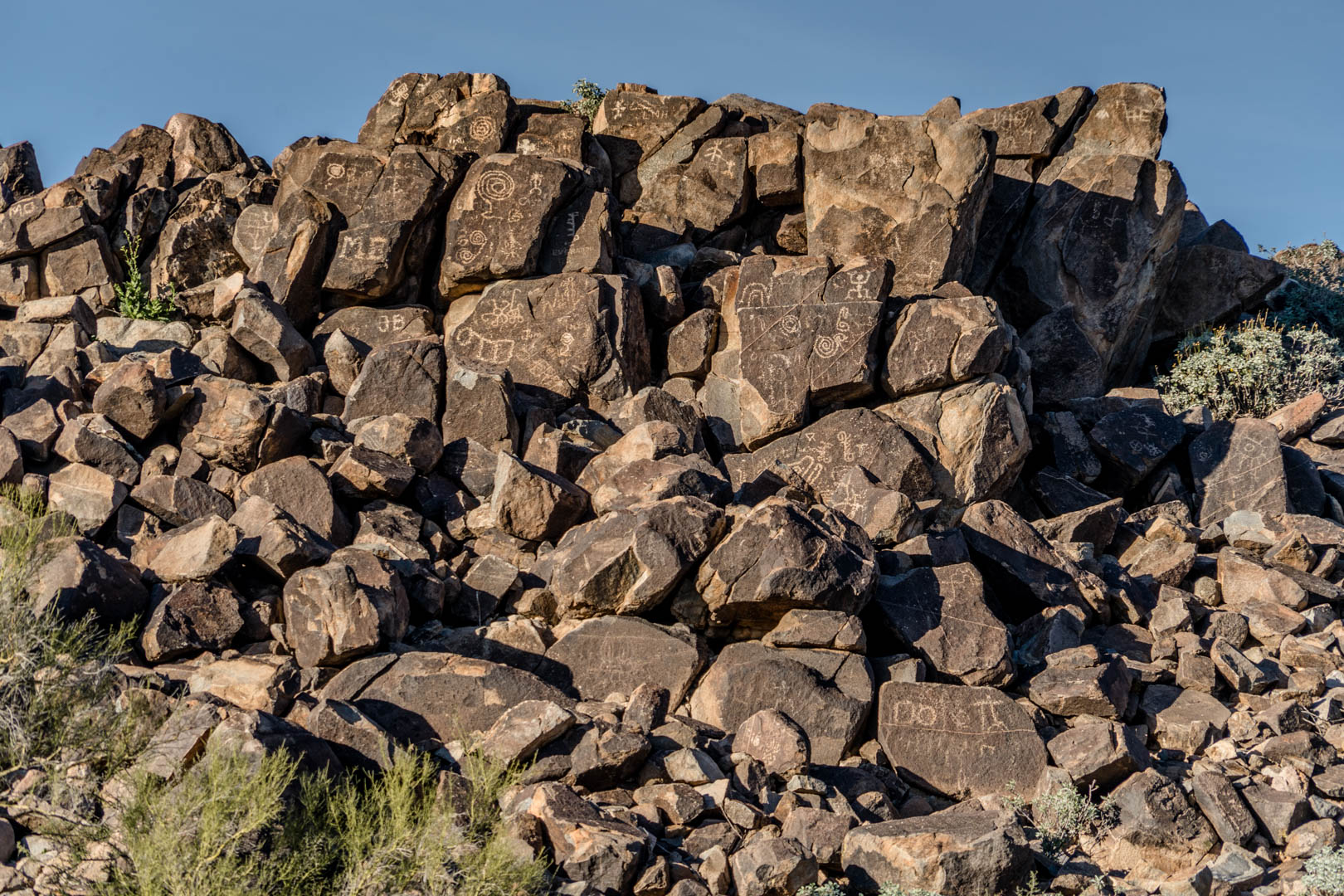
I think the best petroglyphs were on the little hill at the end of the trail. Some of them are abstract spirals, while others are representational of animals, humans and astrological objects.
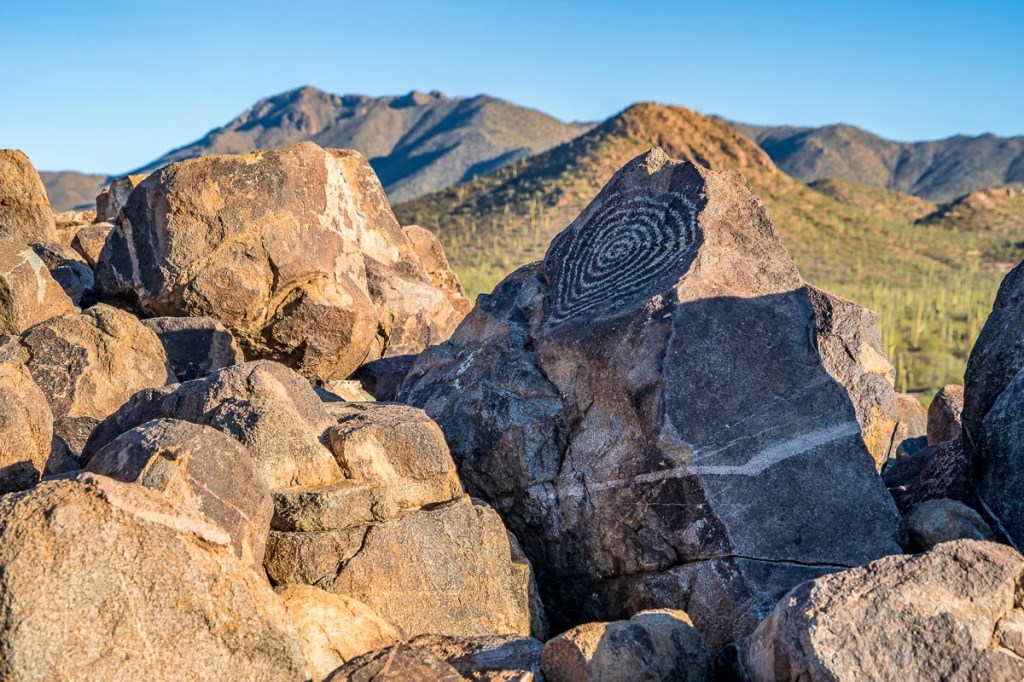



If we had more time I would have loved to check out the Arizona-Sonora Desert Museum, which I hear is fantastic. Nonetheless, we ran out of time and didn’t get to see the east side of the park at all. I would love to go back to Saguaro National Park sometime, hopefully when it’s open and fully operational. There seem to be some amazing hikes (for the Arizona wintertime, and not summer for me!) that I would love to check out. And after visiting, I have to say that the saguaro is now my favorite type of cactus. You must admit that from afar, it looks friendly, especially when it has arms to “wave” at you.

Just remember to respect your elderly plants!


